What are the types and varieties of chamomiles?

In the modern plant register, approximately 25 varieties of daisies are recorded, which are included in the Astrov family group. The varietal diversity of the plant is even richer. The Astrov group is included in the genus Matricaria; full-fledged traditional species of daisies are officially included in it. But there is a fairly large number of flora representatives that are scientifically located in other groups and subgroups, but visually very similar to traditional species.
Thus, in everyday life, this name is called several tens of thousands of various colors that have nothing to do with the true representatives of this group. To figure out which plants are traditional, and which are only called daisies, you need to know the exact morphological and other criteria.
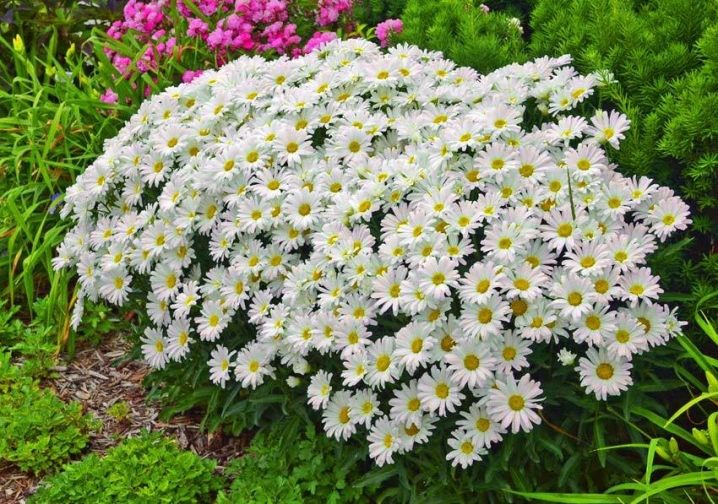
Description of chamomile pharmacy
Chamomile has a meaningful relationship to the genus Matricaria.
It is considered necessary to have such a characteristic feature as an empty cavity in the flower bed. It is this difference that makes it possible to accurately determine the true chamomile.
Within this species, there are several especially common varieties, among which the most popular is the pharmacy, or Matricaria chamomilla. In common parlance, it is often called stripped, as well as medicinal.
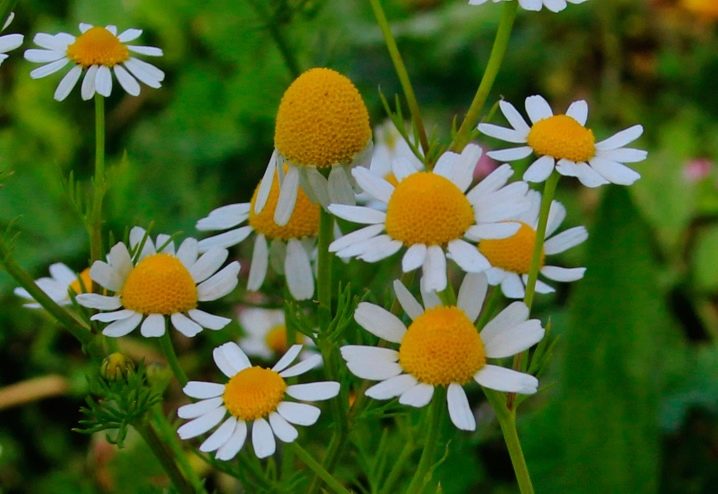
This plant is an annual, the visual characteristics are as follows:
-
stem straight, empty inside, branching at the base, height varies - 20–60 cm;
-
the stems are branching, are thin;
-
feathery foliage, thread-like, sharp at the tips;
-
flower baskets have different diameters, on average it is 2.5 cm;
-
during the beginning of flowering, the shape of the flowers is like a hemisphere, then it tends to be cone-shaped;
-
the inflorescence consists of 12 to 18 reed-type flowers that form a row on the outside, plus many tubular-type flowers that are located on the flower bed.
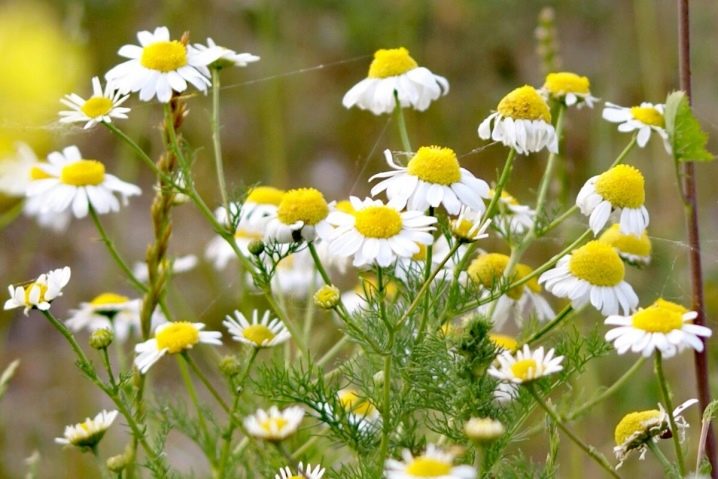
The plant has a wide geographical distribution: in the European, Asian, American continents, in the Siberian and Trans-Baikal regions. Only in the tropics this species does not grow. The pharmacy variety has a general resemblance to representatives of the genus, but there are also features, you can distinguish this chamomile by the following features:
-
petals of a snow-white shade can be inclined or placed strictly horizontally;
-
a yellowish basket is convex and very lush, inside it is completely hollow;
-
cone shape in the period of mature flowering.
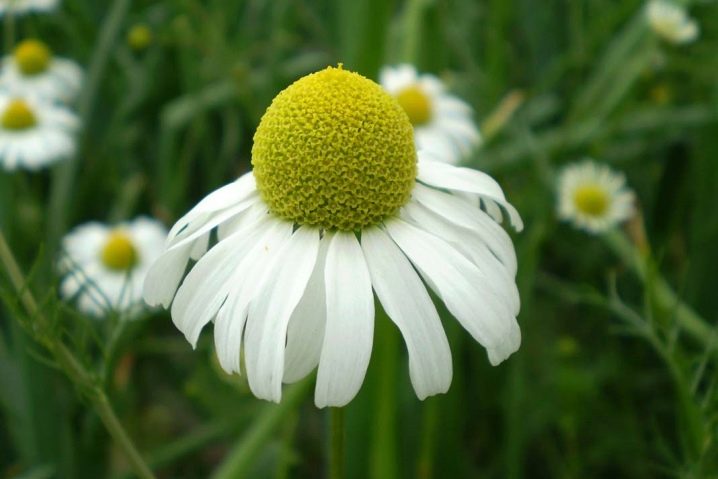
What does green chamomile look like?
The green variety of this plant is also called odorous and tongueless, the official name is Matricaria discoidea. It is called green because the flower baskets have a yellow tint with a green tint, while at the pharmacy they are strictly bright yellow. There are other differences from other types:
-
no flowers of the edge type;
-
pronounced aroma;
-
foliage is very large and dense, densely spaced;
-
dense bush.

This is an annual, which, due to its aroma, was named not only fragrant, but also fragrant chamomile. The smell of flowers is herbal, with notes of the field, close to wormwood. The visual characteristics of the plant are as follows:
-
baskets form tubular flowers, smallish with a green tint;
-
stems are low, length varies from 8 to 30 cm;
-
the stems are actively branching at the top;
-
the color of flowers is atypical chamomile, since there is no snow-white edging;
-
in place of tubular flowers, seeds are formed (after the pollination process).
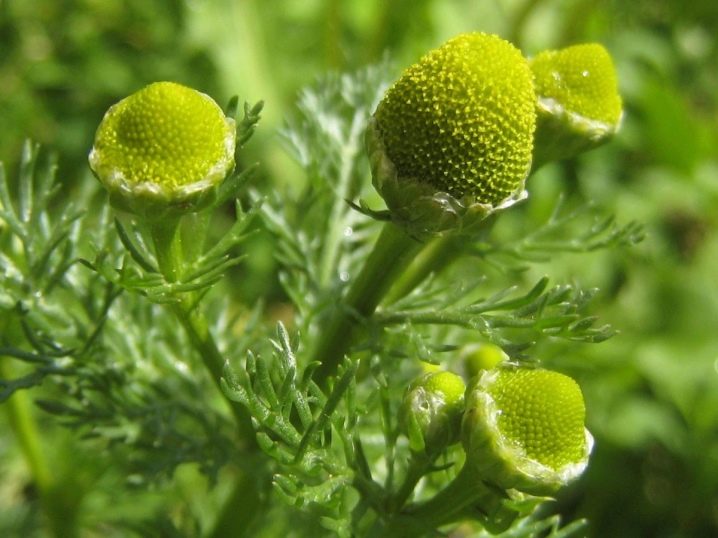
The geographical distribution of the plant is quite wide, it includes Eurasia, the American continent and the entire temperate zone as a whole. Seeds germinate in spring and autumn, autumn ones winter well under a layer of snow. Reproduction continues for almost the entire warm season.
Overview of other popular varieties
Types and varieties of daisies are different in size, height, and other criteria. In nature, there are annual, perennial options. Completely different varietal species are spectacular or laconic flowers. Among the popular varieties and varieties, the following are distinguished, which have spread throughout the world.
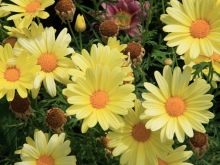
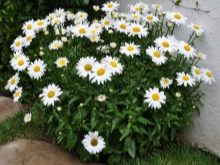
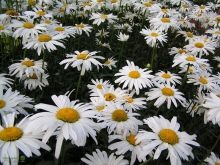
Golden
This variety is slightly odorous, especially lack of flowers of the edge type. At the same time, small inflorescences in the flower bed are yellow or closer to golden, hence the name. The width is rarely more than 8 mm, the stem stretches up to 25 cm in height. A distinctive feature is that the baskets are not only located in the inflorescences-shields, but also grow one by one.
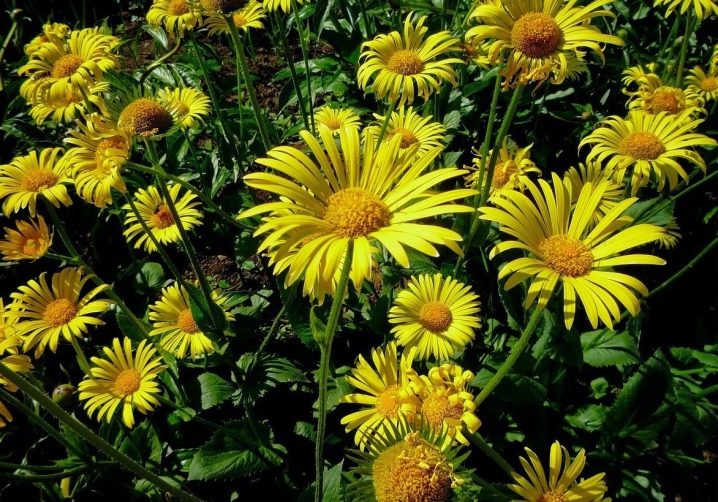
Rocky
The rocky variety, as the name suggests, lives on the slopes of the mountains, at the lowest level of humidity. This is one of the few daisies that does not require abundant moisture in the soil. A distinctive characteristic of this species - horizontal shrub stalks that spread along the ground. Most often, the flower grows in the Alps and other temperate mountains.
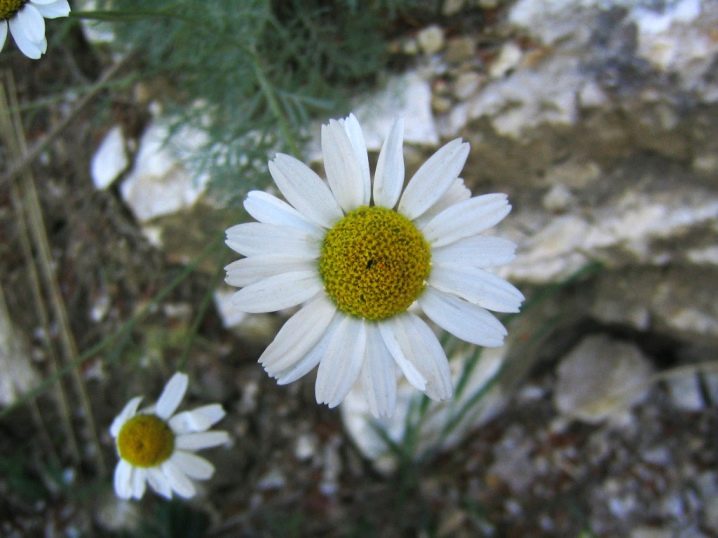
Western
Visually similar to Rocky and Golden, but its stem is higher, and significantly - up to 70 cm in height. Flowers have almost no aroma at all, the place of distribution is the North American mainland.
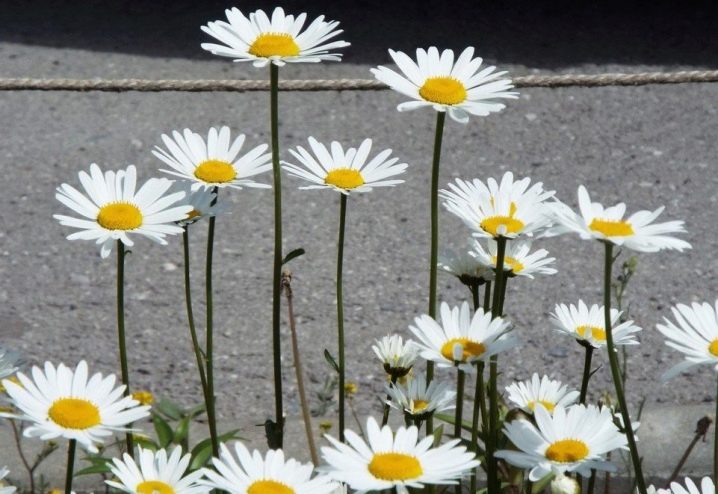
Giant
The largest variety of chamomile, a perennial herbaceous-shrub type. The peculiarity of this species is consonant with the name - the inflorescences are very large, the color is snow-white, the center is bright yellow.
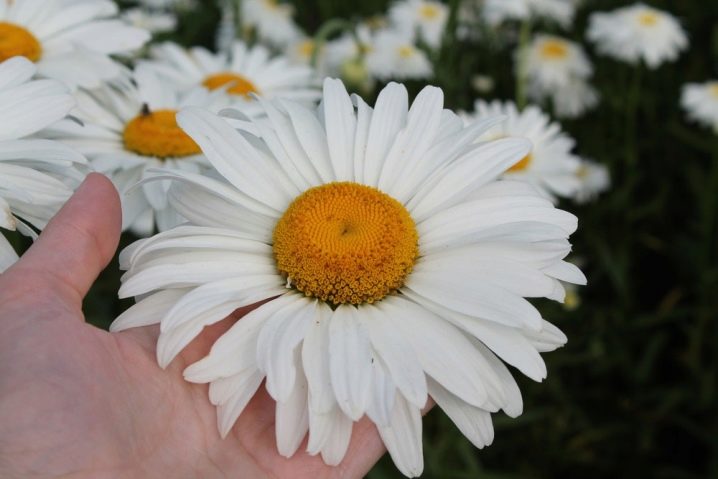
Among the variety of varieties of chamomiles, it is difficult to single out the most beautiful and popular. But there are options that are most often chosen by flower growers.
-
"Snowball". An annual, a small bush that is very undemanding to care for. The height reaches from 20 to 30 cm, there are a lot of inflorescences, their diameter varies from 1.5 to 2 cm. The flowers are visually similar to pillows, snow-white, the petals of the edge type are present.
-
"Maiden". Herbaceous perennial, which is also called maiden chrysanthemum. Ideal for a variety of garden compositions, unpretentious, survives well in different conditions. The diameter of the inflorescences is small, the color is juicy yellow, there are white marginal flowers.
-
"Camilla" - This is a kind of pharmacy chamomile, is an ornamental annual. The height of the bush reaches a maximum of 35 cm, lateral branches are formed in large numbers. The foliage is narrow, bright green.
-
Broadway Lights. Chamomile is one of the varieties of cornflower. Differs in a delicate shade of marginal inflorescences, they have a slight yellow tint.
-
Goldrush. Another variety with refined petals arranged in several rows. They are low - up to half a meter, the diameter of the inflorescences - 10 cm. The color casts lemon.
-
"Edelweiss"... Nivyanik belongs to semi-double varieties, the rows of white petals are double. One consists of elongated and straight leaves, not too wide. In another, they are small, rounded, located closer to the center.
-
"Maxima Koenig". The size does not differ from the previous variety, the core has a darker yellow color. The white petals form two rows.
-
May Queen. It grows up to half a meter, the foliage has a glossy tint. It spreads along the ground.
-
"Rizhskaya". Differs in luxurious inflorescences, the diameter of which reaches 16 cm. Snow-white semi-double, thin petals have different shapes.
-
Real nit. A spectacular non-trivial variety, the snow-white petals of which form several rows.The tips of the petals are wider than the base.
-
Old Court. Visually, this variety looks like a thinned chrysanthemum, there is a semi-double. The petals are refined, white, and straight.
-
Sanssouci. High stem - up to 1 m, flower diameter - about 12 cm. The core is small, the petals are white, forming several rows.
- "Silver Spoons". Visually, it is very similar to the variety "Real Nit", but there is a significant difference - the width of the petals: they are much wider.
-
"Snow Maiden". In appearance, the flowers are very reminiscent of chrysanthemums, have the finest petals, the inflorescences are as fluffy as possible. When fully dissolved, the core is hidden behind the petals, which curl a little.
-
"Alaska"... Classic variety with elongated white petals and a small yellow center.
-
Beethoven. The growth of stems does not exceed half a meter, it blooms actively, forms many inflorescences.
-
Victoria Secret. Differs in the highest decorativeness, refers to terry varieties, but the terry is not too pronounced.
-
Little Princesses... One of the neat and laconic varieties, small inflorescences. Differs in a non-standard foliage shape.
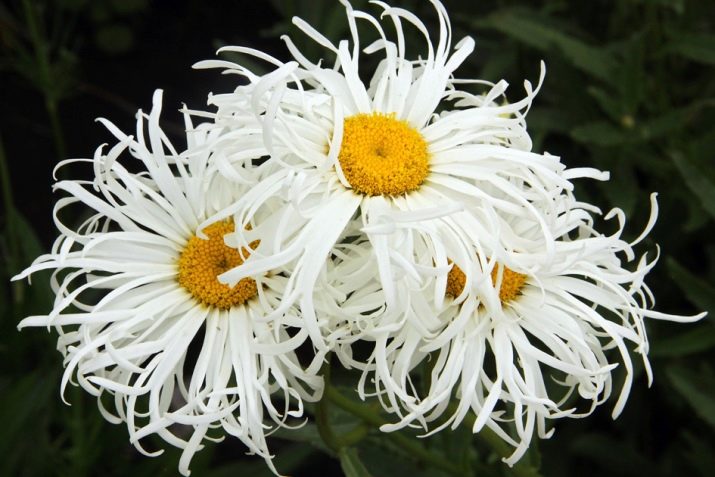

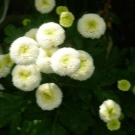
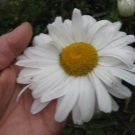
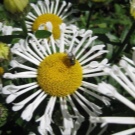
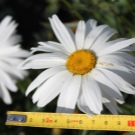
What plants are often called chamomiles?
There are not only a huge number of varieties of true chamomile, there are many plants that visually resemble these flowers. They are included in other families, genus and groups, however they are often confused with daisies. Even among scientific workers, similar flowers are often called daisies, since there are a number of representatives of the flora, for which the name has been historically stuck. Large and small plants, similar to chamomile, adorn garden groups no less often than traditional ones. There are also wild-growing variations.
-
Feverfew is red. It is called red chamomile, inflorescences are small, laconic, ordinary foliage. Despite its modest appearance, this plant looks great in garden groups and compositions. This is a flowering shrub of a herbaceous type, the height can vary from 60 to 90 cm. The stem is powerful, erect, despite the overall inflorescences, it does not bend. The foliage has a juicy green color, the middle of the flowers is convex, yellow and dense. The petals are reddish, which is clear from the name, they form several rows, like chrysanthemums, creeping roots. An unpretentious plant, which, however, quickly fades under the sun.
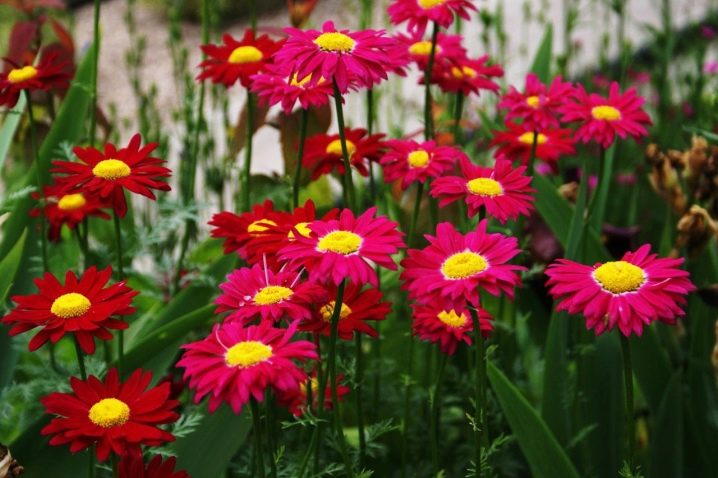
-
Pupavka noble... It is often mistaken for a pharmacy and is even called Roman chamomile. The foliage of this plant is larger and thicker, the bushes are dense, the inflorescences are incomplete. It is also a perennial, in contrast to the pharmacy.
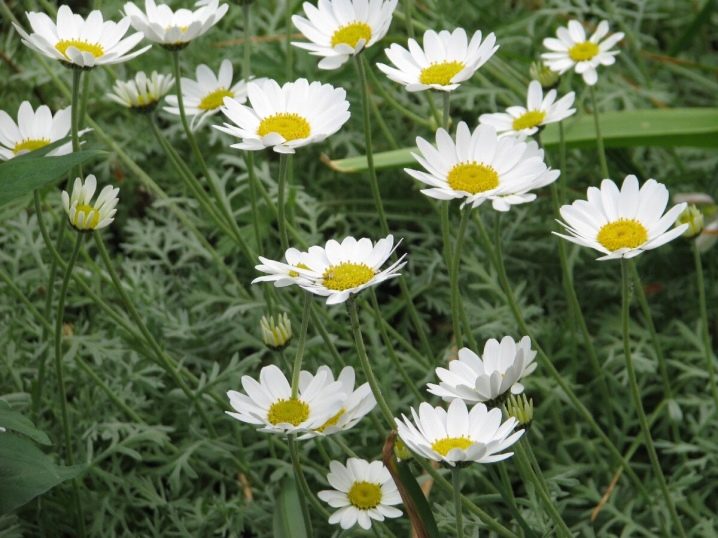
-
Caucasian chamomile. Grows in the highlands, is a herbaceous perennial. In addition to the Caucasian mountains, it grows in Iran and Asia. The height of smooth stems varies from 30 to 70 cm. The flower head on the stem is unique. The leaves are dissected, double at the bottom and narrowly linear at the top. The marginal flowers are red, they can be of different tones, inside they are yellow, of the tubular type.

-
Pupavka is dyeing. The yellow flowers do look like chamomile, but the color is different. The inflorescences are small in diameter.

-
Odorless three-ribbed. Visually resembles ordinary chamomile from the fields, but the lack of aroma distinguishes these plants. Also, there are no voids under the flower bed. Most often it grows on the coast of the seas, prefers sandstones.

-
Feverfew. It is also called tansy, but the similarities with matrakaria are quite obvious. The inflorescences are very similar, the differences are given by the stems and foliage: the latter in this plant are feathery, with deep cuts.
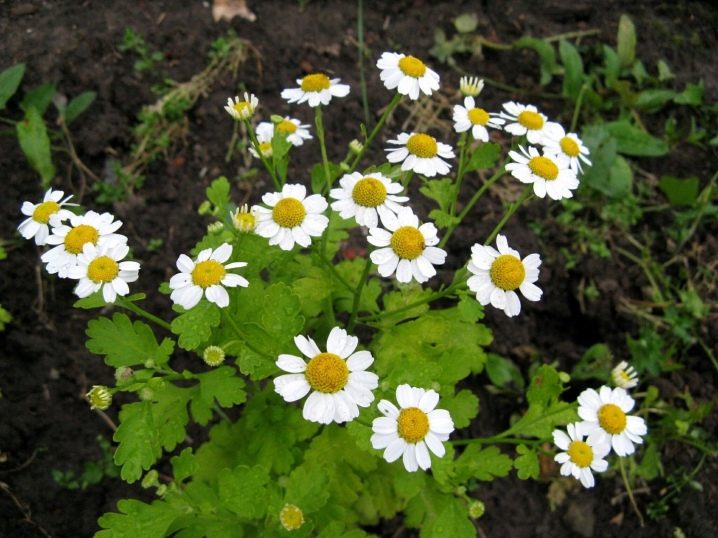
-
Feverfew is scutellum. Another perennial, which is often confused with chamomiles, is widespread in the European zones of many countries, prefers forests, clearings near forests. Bushes and foliage differ from traditional chamomile, the stems are solitary, branching at the top. The foliage is not too densely located, feathery, dissected. Inflorescences include from 3 to 15 baskets. The plant is in the Red Book.

-
Persian chamomile. It also belongs to the varieties of pyrethrum, differences from true chamomile are determined by the color of the edge flowers. They can have a pinkish or reddish tint. The inflorescences themselves are much larger.
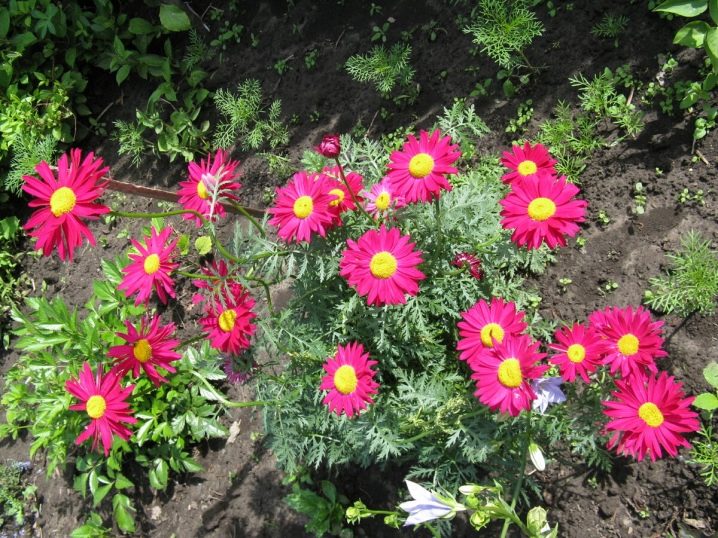
-
Stinking pupavka... Visually, it is very similar to a pharmacy, in another way it is called a dog's navel. It grows wildly, has a very pronounced, but not too pleasant smell of flowers. It is a weed plant.
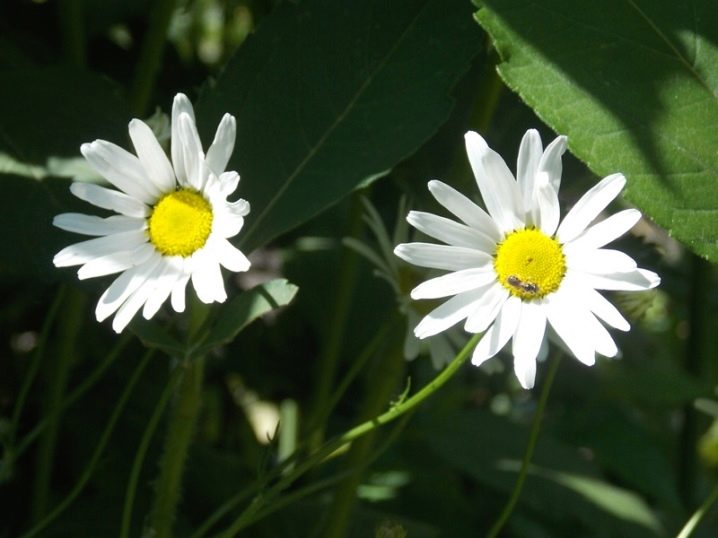
-
Compositae and annual perennials. They grow on the North American continent, their marginal flowers are called petals, not only in common parlance.

-
Daisies... The varieties of this plant, which have a yellow center and white petals, are also often confused with daisies.
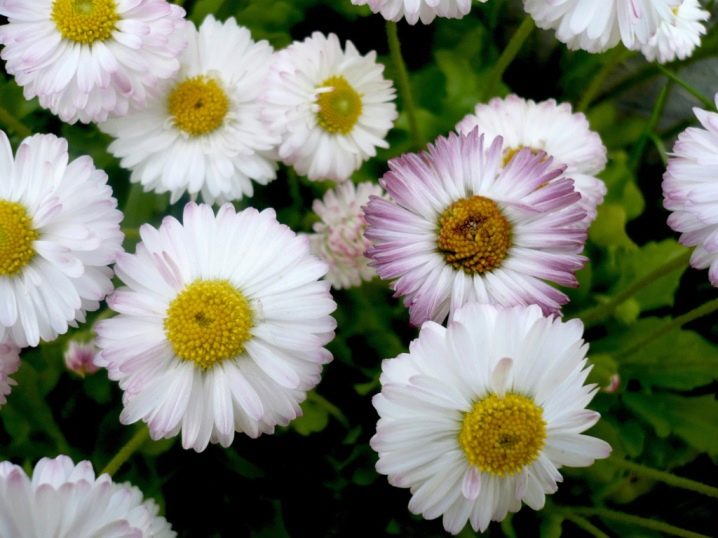
-
Popovnik ordinary... It is called a meadow-type chamomile, but the inflorescences of this plant grow singly. The diameter of the flowers varies from 2.5 to 6 cm.
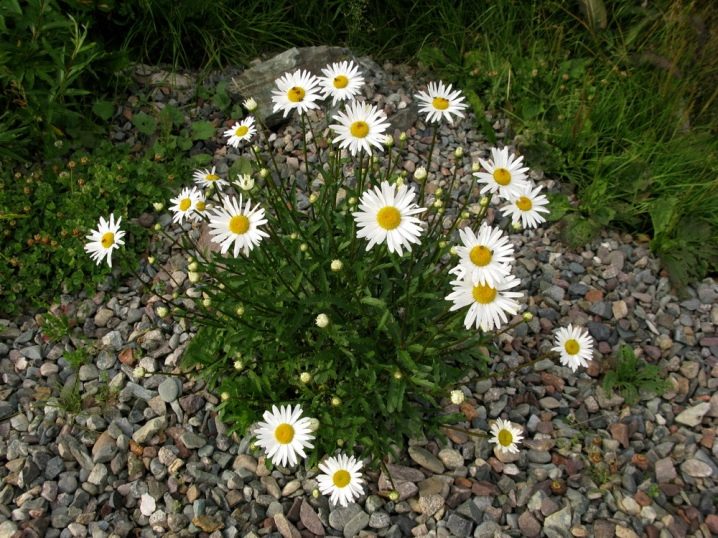
-
Anacyclus... The baskets of these flowers are rather large, the diameter can reach 5–6 cm, but they grow in the inflorescences-shields. The culture grows in the Middle East region, Turkey, the Mediterranean regions. The inflorescences are larger than the dimensions of chamomile.
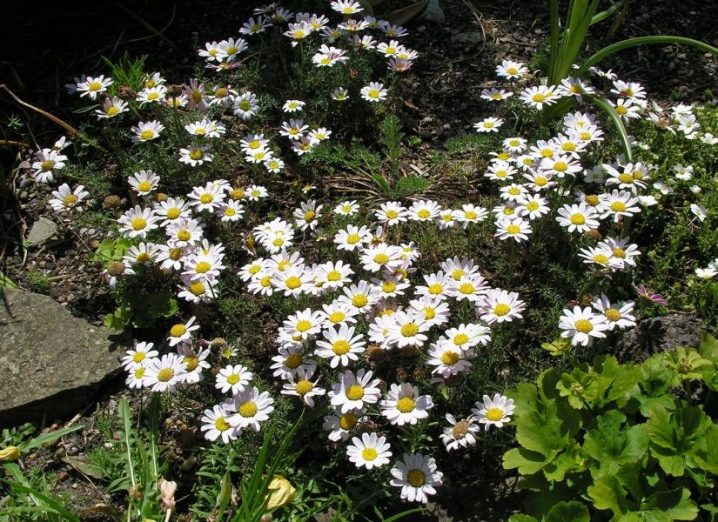
-
Echinacea purpurea... It is called an American-type chamomile, the height of the stems reaches a meter, the inflorescences are about 15 cm in diameter. The flowers of the marginal type are red-purple - this is the biggest difference from the traditional species.
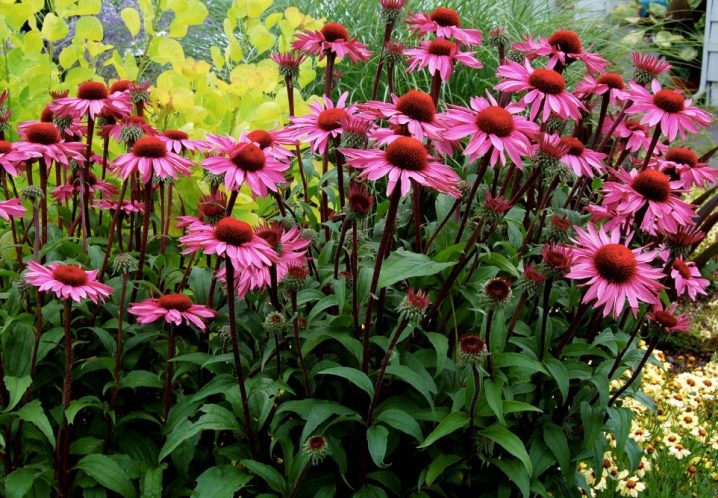
- Argiranthemum... Treelike chamomile, belongs to the shrubs of the herbaceous type, abundant, long-lasting flowering. The plant is highly decorative, reminiscent of chrysanthemums. The chamomile tree can reach a meter in height, it is complemented by openwork type foliage, very lush, the color is silver. Inflorescences can be of different shades: cream, white, pink, yellow.
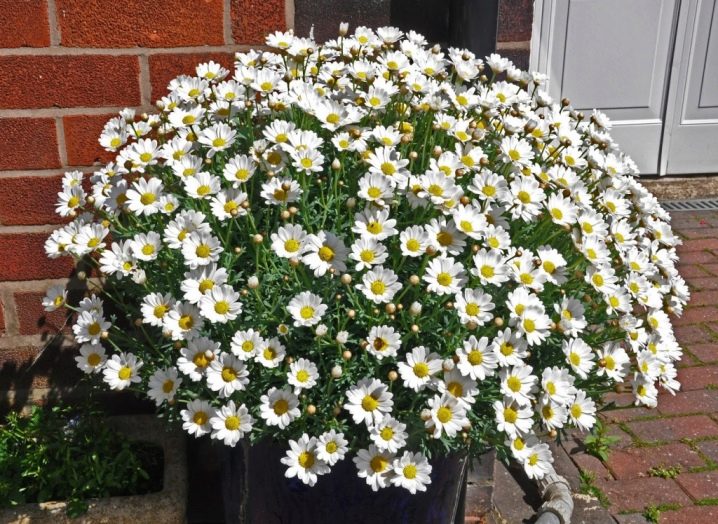
Often, daisies are called indoor plants and garden flowers for flowerpots, which also belong to the aster group. The most common visual difference is the color of the marginal flowers and the core. In a traditional flower, they are white, and the middle is yellow. Among indoor plants, there are representatives with a wide variety of colors.
- Australian chamomile. Annuals of the Helipterum group, which spread from the Australian mainland. They have single-type inflorescences, overall, brightly colored, the middle can be variegated.
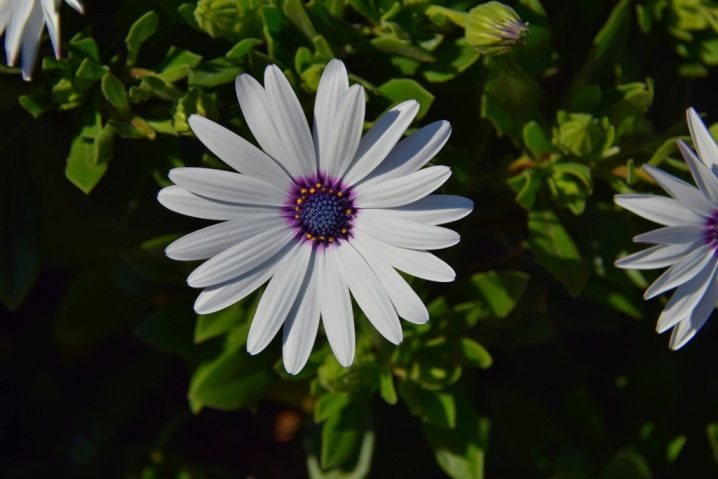
-
Alpine chamomile... In fact, this is a variety of asters, an annual that is grown in garden plots, in park areas. Quite a capricious plant, characterized by high decorativeness. Flowering is quite long, up to frost.

-
African chamomile... This is the name for indoor plants with large inflorescences and juicy shades of petals. Suitable for growing at home, in vases on the street.
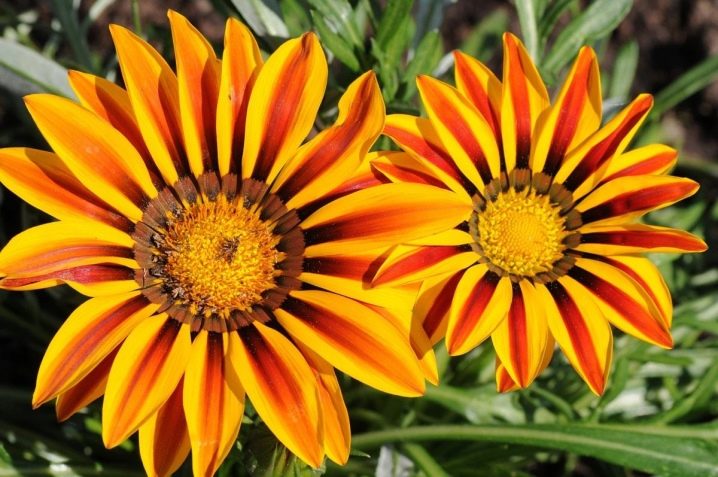
-
Chamomile chrysanthemums. They have a high stem, ideal for floristic purposes. They can be of different colors, including white, but more often yellowish. The inflorescences are three or more times the size of the flowers of the pharmacy chamomile.
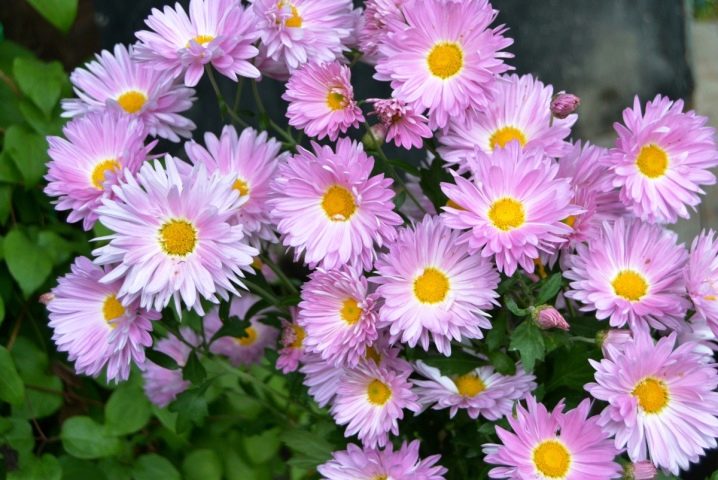
-
Gerberas... Even this independent flower is often called that way because of its resemblance to the chamomile shape. Flowers of the marginal type are two-row, the color range is varied.
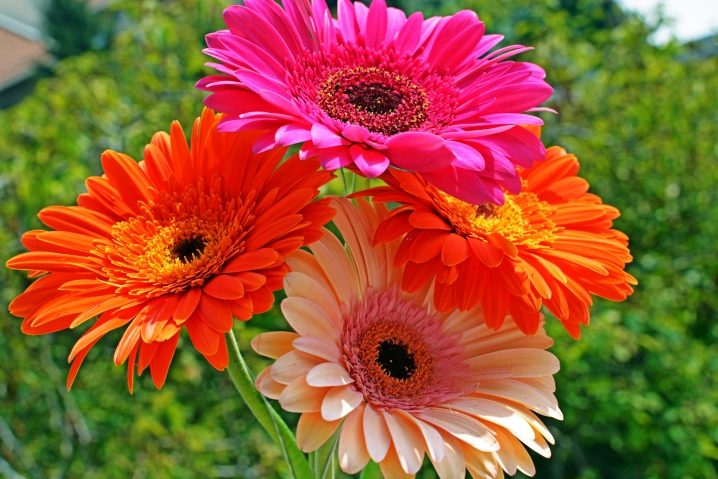
It is erroneous to call the plants listed above chamomiles, this is allowed only in common parlance, for comparison and creation of descriptions. In the scientific community, there are clear criteria, signs of differences between true daisies and representatives of the flora similar in appearance.







































































































The comment was sent successfully.